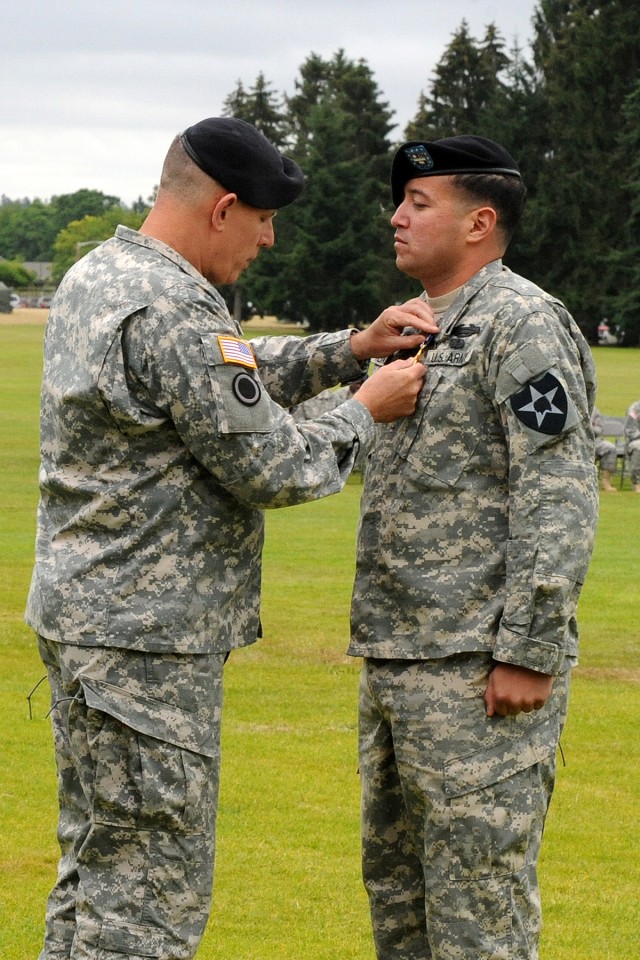JOINT BASE LEWIS-MCCHORD, Wash. - A modest NCO received the Army's third-highest award for valor July 22 during the welcome-home ceremony for 5th Brigade, 2nd Infantry Division. Staff Sgt. Jarrett D. Brown of 1st Battalion, 17th Infantry Regiment, received a Silver Star on Watkins Field at the beginning of a busy ceremony that included the brigade's redesignation and change of command. The acting commanding general of I Corps, Maj. Gen. John D. Johnson paused the proceedings to pin the medal on Jarrett's chest and congratulate him for his conspicuous bravery on Aug. 24, 2009.
On that day, Brown was serving as assistant M-240 machine gunner during a patrol in the Arghandab River Valley, a hotbed of Taliban resistance at that time. The patrol was ambushed and hit by a combination of fires from machine guns, small arms and rocket-propelled grenades.
Brown exposed himself to enemy fire to direct his machine gunner to cover a fire team caught in the open, while also firing his rifle. He then directed suppressive fire on the enemy's heaviest weapons.
As the platoon consolidated, Brown's gunner collapsed in the 100-degree heat. He grabbed the machine gun and dragged the gunner to a concealed position, from which he delivered accurate support by fire.
When it became clear the platoon's situation was untenable, the platoon sergeant ordered the squads to break contact. Brown alternately provided covering fire and moved, dragging his gunner with him. When he saw an enemy fire team creeping to within 30 meters of the platoon, he threw his gunner behind the last concealment available, abandoned his own cover and engaged them, killing one and wounding a second enemy fighter.
Brown set up the M-240 and provided suppressive fire as the rest of the platoon covered about 100 meters to better cover and began a faster, bounding egress. He followed them, still carrying his gunner. The platoon came under heavy fire once more before making it back to the Joint District Coordination Center. Brown returned fire and identified multiple targets for other platoon members. His response created space for close-coordination aircraft to be called in to neutralize the enemy and allow the platoon to finally return to safety.
Brown's first action once the platoon was safe was to find medical assistance for his gunner.
Brigade Commander Col. Harry D. Tunnell IV attributed the success of the Destroyer Brigade during its deployment to the countless unselfish acts of individual Soldiers in dangerous situations -- as Brown did.
"The success of the brigade has been due to the willingness of individual Soldiers to be so untiring as they got ready for war and so staunch in their desire to do their duty in harm's way," Tunnell said.


Social Sharing